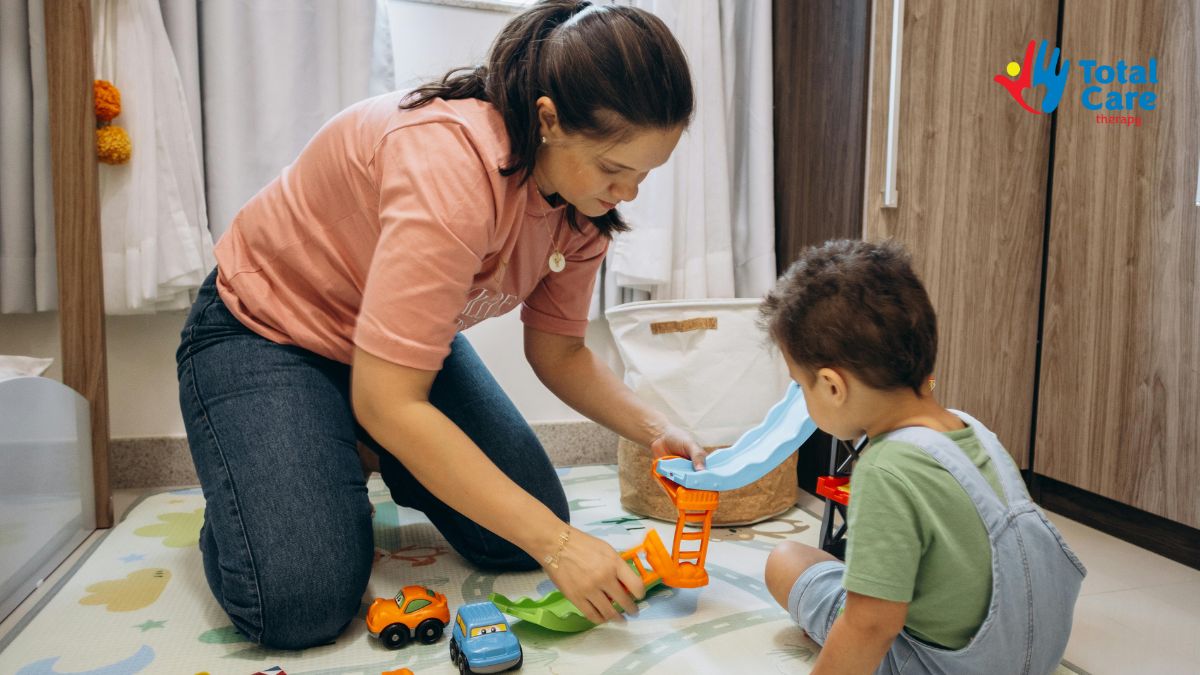ABA Therapy Waitlist: How to Start Parent-led Care Today
ABA therapy waitlist delays can stall care, but parent-led routines keep learning active. Start small goals, track wins, and build skills before services begin.
ABA Therapy Waitlist: How to Start Parent-led Care Today
Key Points:
- Start parent-led ABA care by choosing one safety and one communication skill that happen daily.
- Practice in short bursts, track yes/no progress, and use consistent cues and quick rewards.
- Build daily routines into learning to maintain progress while waiting for formal ABA therapy to begin.
Waiting on a long list feels unfair when your child needs help now. ABA therapy waitlist delays slow support, but home routines do not have to pause. Parent-led care uses simple steps that fit daily life so your child keeps learning.
Below, you will learn what to do today, how to build a weekly plan, and how to match goals to the ABA therapy process until services begin.

What Should Parents Do First While on an ABA Therapy Waitlist?
Families want actions that work this week. Begin by choosing one safety skill and one communication skill. Pick targets that show up many times each day so practice opportunities are easy to find. Keep goals small so early wins build momentum.
- Choose clear goals. Pick one request (e.g., “help,” “more”) and one routine skill (e.g., waiting for a snack).
- Set daily reps. Aim for 10 short trials during natural moments.
- Track one data point. Mark yes/no for each trial on a phone note.
ABA therapy waitlist time still allows structure. Use consistent cues, provide one prompt, then pause. Reward any correct response fast. Keep sessions short and upbeat. Many children learn well in three-minute bursts spread across the day, which reflects what to expect in ABA sessions used later by your clinical team.
A national snapshot shows long waits are common. A U.S. survey of autism centers reported that 61% had wait times longer than four months and 15% reported waits over a year or closed lists.
What Daily Routines Work for Parent-Led Care?
Home offers dozens of natural practice moments. Pick routines you already do and add one small learning step.
- Mealtimes. Model “more,” “all done,” or pointing to a picture choice.
- Bath and dress. Practice one-step directions like “hands in sleeves.”
- Play. Turn-taking with blocks or cars builds joint attention.
Short wins beat long drills. Keep prompts simple and fade them fast. End while your child still enjoys the task. These routines mirror parent coaching through ABA therapy that blends instruction with play, which helps generalization before formal care begins.
Parents often search “ABA therapy near me no waitlist.” While you search, keep home practice steady so skills do not stall. Use the same words and gestures each time to make responses easier.
How Do You Build a One-Week Parent Plan?
A light plan prevents confusion and keeps practice moving while on an ABA therapy waiting list.
Use this weekly outline:
- Monday: Set two goals, define the prompt you will use, and pick rewards.
- Tuesday–Thursday: Run 10 trials per day in short bursts. Jot yes/no.
- Friday: Review notes and adjust prompts or rewards.
- Weekend: Generalize in a new room or with a different person.
Quick planning rules:
- One goal per routine. Avoid mixing targets in the same moment.
- One prompt at a time. Use gesture or verbal, not both.
- One reward that the child loves. Deliver immediately after success.
This simple rotation aligns with ABA therapy goals: clear antecedent, prompt as needed, timely consequence, and consistent data.

What Skills Should Start First?
Start where impact shows up daily. These early skills reduce frustration and give fast feedback on what works.
- Communication: “Help,” “stop,” “more,” pointing to a picture, or a single switch button.
- Safety: Hand-holding at curbs, waiting at the door, stopping when called.
- Self-care: Washing hands, putting dish in sink, putting on shoes.
Perform each target with a cue and a tiny step. “Help” can begin as a gentle hand-over-hand tap on a help card, then a fade to a light touch, then independent tapping. This mirrors skill development in ABA you will later measure across weeks.
Evidence supports parent-led practice. A 2024 meta-analysis found moderate gains in social communication (d = .63) and language (d = .40) from parent-mediated, play-based interventions for preschool children.
How Many Minutes Per Day Should Parents Aim For?
Intensity depends on age, stamina, and schedule. Keep home practice realistic and frequent.
- Aim for 30–60 minutes total per day broken into short bursts.
- Spread sessions across routines so practice feels natural.
- Pause before fatigue to protect motivation.
When formal care begins, your team will discuss ABA therapy hours. Research describes early intensive models delivered 20–40 hours per week for young children, which sets context for future service plans.
ABA Therapy Waitlist Strategies: How Do You Reduce the Delay?
The ABA therapy waitlist creates stress, but a few actions can move things faster.
- Call weekly. Ask about cancellations and partial schedules.
- Say yes to telehealth ABA therapy. Many providers start parent coaching by video.
- Request a parent-training start. A few clinics open with coaching while you wait.
- Ask for a triage slot. Some programs offer starter hours before full assignment.
- Expand radius. Search nearby towns for open panels on your insurance.
If you still search ABA waitlist forums for tips, keep records of calls and emails. Document dates, names, and outcomes so support teams can escalate requests when needed.

What Tools Make Parent-Led Care Easier?
Simple tools help you track progress and keep practice fun.
- Visual supports. Print two-choice boards and first-then cards.
- Timers. Use a two-minute timer to start and finish play.
- Click counters. Tap once for each success during a burst.
- Phone notes. Save a daily yes/no line for each goal.
These tools keep sessions consistent and mirror systems used in an example of ABA therapy session. When services begin, your data helps the BCBA set baselines faster.
How Do You Coach Other Caregivers?
Care spreads when everyone uses the same cues. Share a one-page plan with grandparents, babysitters, and teachers.
- State the goal in one line. “Child taps ‘help’ card to request help.”
- Show the cue. Picture, gesture, or verbal phrase.
- List the reward. One small edible, praise, or 20-second activity.
- Define the stop. End after success or after two prompts.
Parent and caregiver training in ABA through telehealth can help during wait periods. Studies show that remote training increases parent skills and can improve child communication, which matches how many clinics support families before full schedules open.
How Do You Prepare for Enrollment and Paperwork?
Use the wait to get files in order so the ABA therapy process starts quickly once a spot opens.
- Collect documents. Diagnostic report, insurance card, and referrals.
- List medications and allergies. Keep an up-to-date summary.
- Write top goals. Three priorities help the intake team plan.
- Confirm benefits. Ask about deductibles, co-pays, and visit limits.
If you wonder how to apply for ABA therapy, most clinics ask for the diagnosis, coverage details, and a release form to contact your pediatrician. Many insurers also require updated treatment plans at set intervals, so keep a shared folder ready.
What If Behavior Gets Hard While You Wait?
Plan for a few common challenges so stress stays lower at home.
- Aggression or self-injury. Keep a brief safety plan, remove triggers, and contact your pediatrician if risk rises.
- Sleep disruption. Use a consistent routine, one cue for lights out, and a short visual schedule.
- Elopement. Install door alarms, practice stop/go games, and use ID tags in public places.
If severe behaviors grow, ask the clinic for earlier parent training by telehealth while remaining on the main list. Keep notes on triggers and successful responses so the team can build a stronger plan at intake.
What Comes Next When a Slot Opens?
Day one should feel familiar if you practiced at home. The team will confirm goals, run short assessments, and set a weekly plan.
Early sessions often focus on pairing (making therapy fun), communication, and daily routines. Your home data helps set targets and criteria. When talking through ABA therapy hours, expect a plan that scales up or down based on progress, stamina, and family schedule.

Frequently Asked Questions
Why are ABA waitlists so long?
ABA waitlists are long due to high demand, limited provider availability, and insurance restrictions. Clinics need board-certified supervisors, but there are fewer than needed. Insurers may cap authorizations, and rural areas face travel barriers. Public plans with lower reimbursement rates also reduce provider capacity, extending delays.
What is the average waitlist for ABA services?
The average waitlist for ABA services ranges from several months to over a year, depending on location and insurance. Diagnostic delays and limited provider capacity extend timelines. Ask clinics about cancellation spots and telehealth parent-training to begin support while waiting for full services.
How long does it take to get ABA therapy certification?
It takes two or more years to earn ABA therapy certification as a Board Certified Behavior Analyst. Candidates must complete a graduate degree, supervised fieldwork, and a national exam. Program pace and hour accrual affect timing. This long pipeline limits clinician supply in many areas.
Schedule Parent-Focused ABA Support Now
Families can start coaching and plan full services as openings appear. By engaging in autism therapy services in Arizona, New Mexico, Tennessee, Indiana, Georgia, North Carolina, Maine, and Utah, you can begin parent training now and move into direct sessions as schedules expand.
At Total Care ABA, our clinicians pair family goals with clear targets and practical home steps so gains continue between visits. Many parents begin with a short intake call, a telehealth coaching session, and a simple weekly plan.
Reach out today to set up parent-training and to hold your place for direct services in your state.








